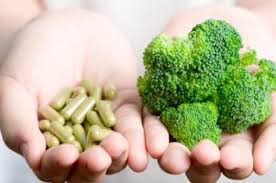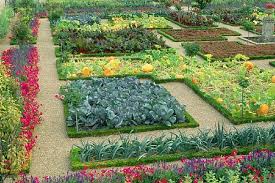6. Food!
Another way that plants are so beneficial is that they are an abundant diverse, and arguably the most important food source! A wide range of fruits and veggies are provided by incredible plants, providing a significant amount of our fibre intake. Fibre is vital for maintaining a healthy digestive system and feeding our microbiome .
7. Provide Medicines
As well as food, plants provide us with our original medicines. These natural sources of medicine are something that we, as Natural Health Practitioners, still utilise today because of their incredible potential, wide range of applications and proven effectiveness. In 2002, a study stated that ‘Plants are arguably poised for a comeback as sources of human health products’ and we are consistently finding that to be true.
8. Improve Soil and Water Quality
Some plants can act as filters in the water, filtering out toxins, bugs and added pollutants to keep the water clean. Some plants can do the same in the soil; those with a compost bin for ‘recycling’ plants scraps can support this! Putting veggie scraps back into the garden can cause growing plants to thrive by providing essential nutrients and environments for beneficial microorganisms.
9. Act as Protection
Plants are incredible useful for protection, of us and animals. All different parts of plants can provide habitats and homes for many animal species, which is why it’s important to be mindful of how plants are sourced and utilised, we don’t want to be taking away homes!
Plants also provide a large quantity of our building supplies and the shade provided from trees protects humans from harmful UV radiation, as well as from the weather!
10. Moderating Temperature
Plants have a significant impact on moderating temperatures. Indoors, it is thought that plants can reduce heating and cooling costs due to this incredible ability. While outdoors, one study showed that plants like solitary trees, clumps of trees and vines had the ability to reduce surface temperature on buildings in urban environments (7). This is also important to remember as we tackle tough issues like climate change… maybe a few more indoor plants could cool down your home instead of the air conditioner.
Norfolk Botanical Garden (http://norfolkbotanicalgarden.org/education/online-resources/power-plants/plants-people) states the following about how plants enhance our lives:
Natural Resources
Plants are one of our most valuable natural resources. Why? Without plants there would be no life on earth! It’s a good thing we have plants and plenty of them. We’d like to show you some of the ways that plants affect your daily life.
Plants Clean the Air: Take a deep breath. Plants recycle the carbon dioxide that we give off and turn it into oxygen that we need in order to breathe. Do you have any plants inside your house? Plants kept indoors can help purify the air and smell better than a fake air freshener. Save some money, buy a plant instead!
 Plants Are Our Food: Plants are not only food for animals but they are our food too! What did you have for breakfast this morning? Unless you decided to skip breakfast there was probably at least one plant somewhere in there. There are grains in cereal, or maybe you drank orange juice, either way you are using plants! What about your other meals? Maybe there are apple slices in your lunch, sweet pineapple on your sundae or french fries from the cafeteria, all of these come from plants.
Plants Are Our Food: Plants are not only food for animals but they are our food too! What did you have for breakfast this morning? Unless you decided to skip breakfast there was probably at least one plant somewhere in there. There are grains in cereal, or maybe you drank orange juice, either way you are using plants! What about your other meals? Maybe there are apple slices in your lunch, sweet pineapple on your sundae or french fries from the cafeteria, all of these come from plants.
Do you like tangy barbeque? How about spicy pizza? You can thank plants for that tasty boost. Now that should give you something to chew on for a while!
One of your food colorings comes from a tree. During WWII there was a shortage of butter, so people would have to use margarine. In order to make the plain white margarine look more like real butter the companies would include a small packet of dye that your family could mix into the margarine and make it turn yellow. That dye came from the Annatto tree.
Plants Become Shelter: Did you know that every building that you see around you has been constructed using wood from trees? Whether wood is hiding on the inside of the walls or very obvious on the outside, trees are part of your shelter. What about the furniture that you sit on? Do you have a wooden bed? Tonight when you get into bed look at the tag on your bed sheets. Are they made of cotton? How about the clothes you are wearing? Cotton shirts, cotton blue jeans and cotton socks are just a few of the important things in your life that come from plants.
Plants Are Used For Medicine: You probably already knew that plants were the original medicines that people would use when they were sick. Did you know that we still use them today to come up with new cures for illnesses? Just the smell of some plants can make you feel better. Have you ever used a special cream to help you breathe when you’re feeling stuffy? It was probably mint or eucalyptus that helped you breathe a little easier. Do you know anyone that likes to wear perfume? Wonderful scents come from all kinds of wood, grasses, flowers and even roots.
We use plants in so many different parts of our lives.
References For 6-10.
- Relf, PD & Lohr, VI 2003, ‘Human issues in Horticulture’, Horticultural Science, vol. 38, no. 5, pp. 984-993
- Rowe, DB 2011, ‘Green roofs as a means of pollution abatement’, Environmental Pollution, vol. 159, no. 8-9, pp. 2100-2110
- Victorian Government 2016, ‘Fibre in Food’, Better Health Channel, <https://www.betterhealth.vic.gov.au/health/healthyliving/fibre-in-food>
- Raskin, I, Ribnicky, DM, Komarnytsky, S, Ilic, N et al. 2002, ‘Plants and human health in the twenty-first century’, Trends in Biotechnology, vol. 20, no. 12, pp. 522-531.
- Arvidson, K 2016, ‘Biodiversity, Nature and Human Health’, Natural Medicine Journal, vol. 8, no. 10, n.p.
- Organic gardening Tips 2012, ‘Improving Soil Quality’, Organic Gardening Tips, <http://www.organicgardeningtips.info/improving-soil-quality/>
Millward, AA, Torchia, M, Laursen, AE & Rothman, LD 2014, ‘Vegetation placement for summer built surface temperature moderation in an urban microclimate’, Environmental Management, vol. 53, no. 6, pp. 1043-1057.

